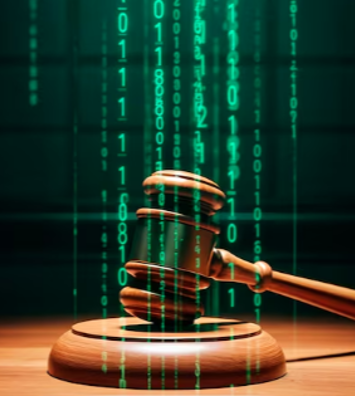Written by: Clyde Alvin Shuman
In a recent non-precedential decision, Alifax Holding SpA v. Alcor Scientific LLC, Nos. 2022-1641, 2022-1723, the U.S. Court of Appeals for the Federal Circuit addressed the level of detail needed in disclosing an alleged trade secret in the context of trade secret misappropriation. Although non-precedential, the Court’s ruling provides valuable information applicable to other trade secret misappropriation cases.
The background of the case is extensive, but necessary to understand to appreciate the Court’s ruling. Alifax makes automated clinical instruments used to determine the erythrocyte sedimentation rate (“ESR”) of human blood samples. n employee of an Alifax subsidiary, Francesco Frappa, left the company and began working for Alcor. Within a year, Alcor offered a new ESR instrument of its own, the iSED, with analytical capabilities comparable to the Alifax devices.
Alifax sued Defendants for trade secret misappropriation under the Rhode Island Uniform Trade Secrets Act (“RIUTSA”). Alifax also sued only Alcor for patent infringement.
Before trial, the parties moved for summary judgment. Relevant here, Defendants moved for summary judgment on Alifax’s claim for trade secret misappropriation, which the district court denied.
The court bifurcated the trial into liability and damages phases. Five days into the liability phase of the trial, Alifax dropped its patent infringement claims, leaving the trade secret misappropriation claims.
Alifax presented multiple theories of trade secret misappropriation to the jury. Two trade secrets relevant: the conversion algorithm trade secret, which comprises “[p]ortions of computer program source code concerning the conversion of photometric measurements, including source code containing four specific conversion constants,” and the alleged signal acquisition trade secret, which involves “the process by which Alifax’s devices gathered ESR=related raw data through signal acquisition.”
At the charge conference, the court struck the alleged signal acquisition trade secret from the jury verdict form. The court excluded “acquisition” from its description of the software and firmware trade secrets, effectively removing the alleged signal acquisition trade secret. Alifax objected, arguing that it had identified the alleged signal acquisition trade secret as “[t]he manner in which the software used in Alifax’s ESR analyzers initiates an ESR measurement from a blood sample loaded in the ESR analyzer, handles a blood sample to introduce it into the capillary container, instructs the ESR analyzer to obtain photometric data, and handles and converts the photometric data to calculate the ESR of the blood sample.” Alifax also contended that it introduced evidence and testimony related to the alleged signal acquisition trade secret at trial.
The court rejected this argument regarding the alleged signal acquisition trade secret, finding there to be “no . . . record evidence of trade secrets involved in any of the steps that are discussed . . . [regarding] how the apparatus would be programmed to operate, other than with respect to the conversion algorithm . . . .”
The jury returned a verdict finding Alifax proved that the conversion algorithm was a trade secret and that Defendants misappropriated that trade secret.
The district court granted Defendants a new trial on both liability and damages for the conversion algorithm trade secret. The court reasoned that because there was little evidence that Alifax’s algorithm could produce highly accurate results in a non-Alifax device, Defendants could not have used Alifax’s algorithm for any purpose.
On appeal, Alifax argues that the district court erred by (1) excluding the alleged signal acquisition trade secret from jury consideration, (2) granting a new trial on liability relating to the conversion algorithm trade secret, and (3) excluding the alleged signal acquisition trade secret from the new trial.
Alifax first argued that the district court erred by excluding the alleged signal acquisition trade secret from jury consideration at the liability phase of the trial. Per Alifax, the “jury was entitled to infer that Frappa’s detailed plan for acquiring a signal from a blood sample was derived from his eleven years at Alifax, particularly in view of the other evidence at trial.”
The Federal Circuit disagreed, holding that Alifax failed to meet its burden of proof to establish the existence and scope of the alleged signal acquisition trade secret. Per the Court, the trade secret owner has the burden of proof to establish the existence and scope of the alleged trade secret in the litigation. To meet this burden, the trade secret owner must “describe the subject matter of its alleged trade secrets in sufficient detail to establish each element of a trade secret.”
The Court found that Alifax not only failed to describe the alleged signal acquisition trade secret with sufficient detail but also failed to identify its proper scope. Specifically, the Court held Alifax’s proffered definition of the signal acquisition trade secret (“how to acquire photometric signals from a blood sample.” only provided a high-level summary of the purpose of the alleged trade secret without describing it in detail. The Court also held that Alifax’s identification of misappropriated trade secrets (defining the alleged signal acquisition trade secret as “the manner in which the software used in [Alifax’s] ESR analyzers initiates an ESR measurement from a blood sample loaded in the ESR analyzer, handles a blood sample to introduce it into the capillary container, [and] instructs the ESR analyzer to obtain photometric data” failed to clarify “the existence and scope of the alleged trade secret,” making it impossible to ascertain whether certain elements of the alleged trade secret have been established, such as “[d]eriv[ing] independent economic value . . . from not being generally known” and “not being readily ascertainable by proper means.”
The Court distinguished a First Circuit decision upholding an inference that a trade secret was misappropriated, after parties had clearly articulated what the trade secret constituted— which “includ[ed] confidential marketing, pricing, and customer information.” Here, per the Court, Alifax failed to articulate the contents of the alleged trade secret.
Alifax also argued that the district court abused its discretion in granting a new trial on liability as to the conversion algorithm trade secret because it required “Alifax’s algorithm [to be] capable of producing highly accurate results in a non-Alifax device,” when RIUTSA does not require evidence of “use” to show misappropriation. The Federal Circuit agreed with Alifax.
The Federal Circuit held that the district court abused its discretion in finding that the jury verdict was against the clear weight of the evidence because it did not consider whether the evidence could establish that the trade secret was acquired through improper means, which alone is sufficient to satisfy the definition of misappropriation under RIUTSA. Per the Federal Circuit, the district court’s decision focused on what it saw as the “critical assumption” underpinning the verdict—that “Alifax’s algorithm was capable of producing highly accurate results in a non-Alifax device”—which it found to be necessary for the Defendants to use the conversion algorithm. However, the new trial order did not discuss whether Alifax’s algorithm would meet the alternative acquisition prong of misappropriation.577–80. Therefore, because a “material factor deserving significant weight”—whether Alifax presented sufficient evidence on improper acquisition—was not addressed, the Federal Circuit found that the district court abused its discretion in finding the jury verdict to be against the clear weight of the evidence.



